The attack on the Iranian embassy in London on March 9 left many confounded. The assailants — who were unarmed, according to British authorities — occupied the balcony of the embassy for a few hours, and took down the official flag of the Islamic Republic of Iran, replacing it with a little-known banner that most media outlets have failed to properly identify. Who does this big blue banner belong to? And what led its supporters to stage the attack on the Iranian embassy?
The men, who were arrested after the attack, have now been identified as supporters of Ayatollah Sadegh Shirazi, a Shia cleric based in Qom who is known for his clashes with the authorities in Tehran. Shirazi is the leading scion of a clerical family that boasts hundreds of thousands of followers in the Shia world, mostly in Arab countries bordering the Persian Gulf, including Kuwait, Saudi Arabia and Bahrain. The attack took place after the Iranian authorities arrested Hossein Shirazi, Sadegh’s son and heir apparent, who has recently given fiery speeches attacking what he sees as injustice done by Iran’s Supreme Leader, Ayatollah Khamenei. In a speech that some observers have seen as the most strident attack on the leader by a Qom cleric, Hossein Shirazi compared Khamenei to the “Egyptian Pharaohs.” The reference might seem obscure to an outsider, but in Koranic tales, the pharaohs stand for symbols of ungodly tyranny.
After the arrest on Tuesday, March 6, the Shirazis demonstrated outside the Iranian consulate in Karbala, Iraq, which is the traditional stronghold of Shirazis. Since then, an already volatile media war has also escalated. Outlets close to Tehran’s government hardliners have been busy circulating anti-Shirazi content (which is a common fixture even in normal times) and Shirazis have put to work their 20 satellite channels, broadcasting from Karbala in Persian, Arabic, Azerbaijani, English and Turkish.
Blue Banner with a Sword
The blue banner that the Shirazi supporters hung from the Hyde Park-facing balcony of the Iranian embassy in London belongs to Servants of Mahdi, a London-based religious order founded by the most controversial figure in the Shirazi movement, the Kuwaiti cleric Yasser al-Habib. The banner is unusual for brandishing a sword, a hallmark of Sunni Salafi groups. But then again, not much is commonplace about Habib.
Habib is son-in-law to Sadegh Shirazi’s brother, Ayatollah Mojtaba Shirazi. After being expelled from Kuwait for his anti-Sunni preachings, Habib set up shop in London and began broadcasting Fadak TV. Habib, Mojtaba and Fadak TV are somewhat independent of more mainstream Shirazis, but the latter are reluctant to go on the record denouncing the former. In my interviews with dozens of Shirazi supporters over the years, I’ve encountered quite a few enthusiastic supporters of this unruly wing of the family.
Habib’s most well-known book, Prostitute: The Other Face of Aisha, attacks a wife of the Prophet Mohammad who is considered by Sunnis to be the “mother of the believers.” His annual celebrations of Aisha’s death was met with rebuke from Abdul-Aziz Al al-Sheikh, the grand mufti of Saudi Arabia, and Ayatollah Khamenei responded to Habib's behavior by issuing a fatwa banning all insults of the wives of any prophet — especially those of Mohammad. Prominent Shia figures, including Muqtada al-Sadr in Iraq and Hezbollah leader Hassan Nasrallah in Lebanon, have condemned Habib for his attacks on Aisha, and for what he stands for in general.
Supporters of Habib could be described as an extreme faction of Shirazi supporters, who are more prepared to be confrontational with the government, but also more stringent in their anti-Sunni attacks. There is evidence that they’ve also played a role in Iraq’s civil war, with Servants of Mahdi’s blue flag being flown on the fronts of the military campaign against ISIS there.
Anti-Sunni?
Ayatollah Khamenei has repeatedly gone on the record attacking Shirazis, who he simply denounces as “British-backed Shias financed by the British treasury.” He also attacks them as a “bunch of mercenaries who add more fuel to the fire” of Sunni-Shiite conflicts.
In February, 2015, the holy city of Qom hosted an event entitled “Assessment of the Extremist Shiite and Sunni Currents.” Its keynote speaker was Ayatollah Mohsen Araki, secretary-general of the World Forum for Proximity of the Islamic Schools of Thought, a government-run ecumenist institution. He attacked the “Londoner Shiites” for their practice of qamezani or tatbir, in which mourners strike themselves on the head with a sword, causing blood to flow as a mark of remembrance of the blood that Imam Hussein shed in the famed Battle of Karbala. Araki said the organizers of such ceremonies are funded by Western intelligence agencies bent on bringing Shia Islam into disrepute, and went on to equate them with the Islamic State.
Qame, a traditional short sword, is indeed a hallmark of Shirazi’s conservative Shia faith and Shirazi leaders, including Sadegh, openly call on their supporters to stage Qamezani, which is outlawed in Iran. Iran’s ambassador to the UK, Hamid Bayidinejad (well known internationally as the head of Iran’s technical delegation to the nuclear talks), claims that Friday’s assailants were also armed with qames.
But just how anti-Sunni are Shirazi supporters?
Many Shirazi supporters point to phrases from Sadegh Shirazi’s many writings, in which he warns against “divisions within Muslims.” But evidence of anti-Sunni sectarianism on behalf of Shirazis abound, including the example of the insults against Aisha, the revered wife of the Prophet Mohammad.
During the Iranian government-sponsored Week of Unity for Shiites and Sunnis, the Shirazi channels declared a Week of Bera’at, named after a Koranic concept that requires Muslims to condemn non-believers. The Salam channel, supported by Shirazis and run by a California-based man called Mohammad Hedayati, promotes a purist Islam, not unlike the Salafi version of Islam. The channel regularly criticizes Ayatollah Ruhollah Khomeini, the founder of the Islamic Republic, not for his fundamentalist politics but for “mixing Islam with Sufism and philosophy.” Hedayati has often been quoted by the US-government funded Voice of America news service as a “dissident cleric.”
Background of Clash
The clash between Shirazis and the Tehran regime goes back decades.
In 1965, Ayatollah Khomeini, who had recently been exiled to Iraq because of his opposition to the shah, paid a visit to Karbala, site of the shrine of Imam Hussein, and one of the holiest cities for Shias. The presiding cleric at the shrine was Ayatollah Mohammad Shirazi, whose family had left Iran for Karbala in the 1800s. Unlike many other Iraqi Shia clerics, Shirazi welcomed Khomeini with open arms and even prayed behind him.
In their intense competition with Najaf to be the main base of Iraqi Shiism, Karbala’s Shirazis hoped to use Khomeini’s presence to tilt the balance in their favor. Khomeini, however, ended up annoying them by refusing to stay in Karbala, leaving instead for the much more reputable Najaf.
After the 1979 revolution and Khomeini’s triumphant return to Iran, Shirazis in Iraq who were persecuted under President Saddam Hussein relocated to Qom. Their hopes of obtaining positions in the new regime came to a quick end when Khomeini moved to consolidate his power.
Since then, they have bolstered their base by setting up dozens of media channels. After the fall of Saddam in 2003, they went on to re-establish Karbala as a primary base and have even appeared on electoral lists in Iraqi elections (without success).
Shia extremism
Ayatollah Khamenei and the main institutions of the Islamic Republic generally promote a public line of Shia-Sunni unity. Taking a sectarian anti-Sunni line is dangerous from a security perspective, given the millions of Sunnis who live in Iran and who even form a majority in some parts of Iran’s western and southern borderlands. The sectarian approach could also do much to damage Tehran’s claim to Islamic leadership, since the vast majority of the world’s Muslims are Sunni.
But Tehran’s support for Shia militias in conflicts in Iraq, Syria, Yemen and Lebanon has often been fueled by sectarianism. Back in Iran, some clerics and religious performers habitually use anti-Sunni rhetoric and call on believers to support or join the fight to “Preserve the [Shia] Shrines” — a euphemism to denote military Shia presence in the region’s civil wars.
Fiery anti-Sunni clerics often maintain a balance between promoting their own ideas and keeping the government on their side. A case in point is Mehdi Daneshmand, a preacher who has gone on record with the most stringent anti-Sunni attacks, claiming all Sunnis are “bastards” and kaffirs. Daneshmand has links to the Hojjatie Society, a traditionalist group founded in the 1950s that is known for its campaigns against Baha’is, Iran’s largest religious minority (the Iranian government also persecutes the Baha’is, banning their access to higher education and limiting them in many other spheres of life). Ayatollah Khomeini denounced the Hojjatie Society in the early 1980s and since then, it has operated in the shadows.
Daneshmand has sometimes appeared on Shirazi-run media, especially since he has been barred from Iran’s national broadcaster for years. He claims this ban is a result of lobbying by Abdolhamid Ismaeelzahi, an Iranian Sunni cleric in the southeastern city of Zahedan, known as the spiritual leader of Iran’s Sunni minority. In 2015, however, Daneshmand denounced the Shirazis and he has often tried to regain favor with the regime. Yet, as late as January 2018, authorities in the province of Kashan banned him from preaching due to the fact that he had insulted religious institutions.
So, as the political tensions heighten in Iran, opposition to Tehran’s unaccountable government seem to come from the most unexpected quarters, including Shia extremists.
visit the accountability section
In this section of Iran Wire, you can contact the officials and launch your campaign for various problems




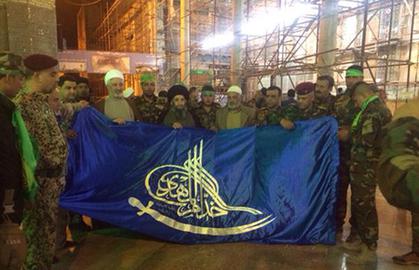
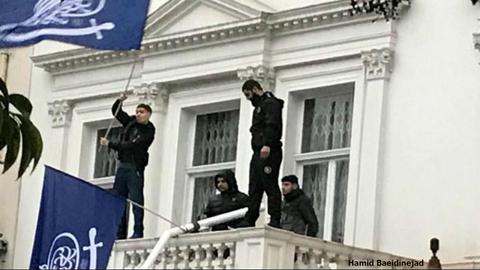
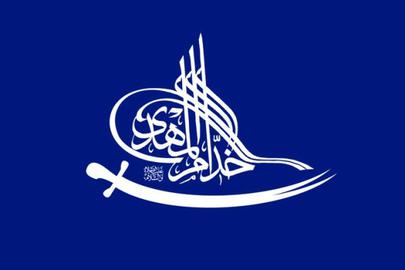
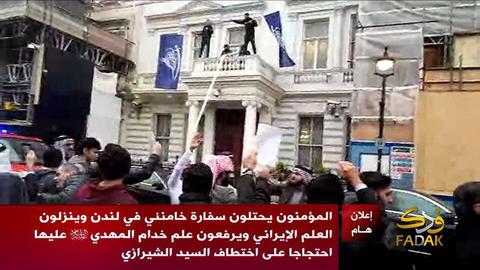



















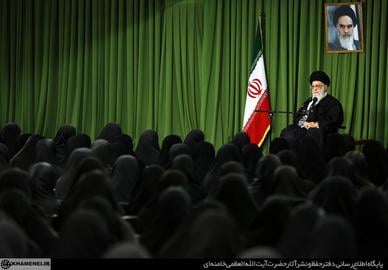
comments